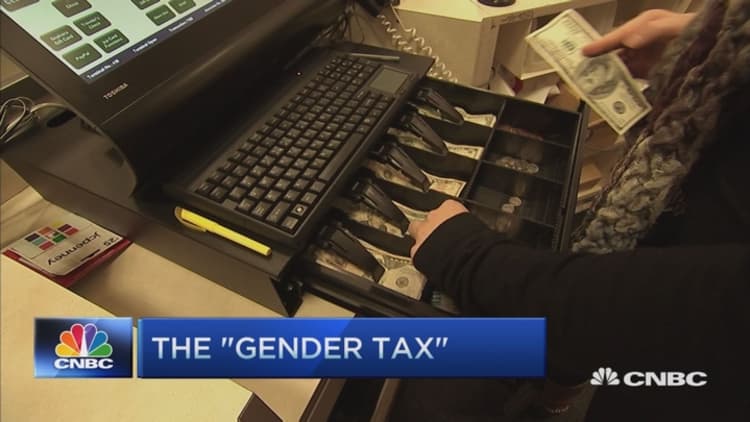
Women: Think before you shop — about gender inequality.
Two recent studies show that gender-inequality issues associated with the corporate "glass ceiling" are also widespread in the retail industry. The "pink tax" on shopping exists on both sides of the consumer transaction (buyer and seller), and at both bricks-and-mortar stores as well as online shopping destinations.
The academic journal "Science Advances" published a study showing that gender inequality "in the workplace" has successfully transitioned to online retail: on eBay, products offered by women sellers fetch lower prices than the same products sold by men, even when the sellers' reputations are equal.
Another recent study conducted by New York City's Department of Consumer Affairs (DCA), covering 800 consumer products, found that 42 percent of the time, products specifically marketed to women cost more than the equivalent male-branded offerings.
These studies should not come as a surprise. There is a long history showing that almost half the time, women end up paying more for similar or even identical products than men, or female-branded products cost more than the same products when marketed to men.
One finding from the "Science Advances" publication should sound familiar: On average, women sellers on eBay received about 80 cents for every dollar a man received when selling the identical new product.
"We have to remember that women across the board in the United States are on average paid 77 cents on the dollar versus men," said Julia Menin, former commissioner of NYC's DCA. "If women are making less and then at the same time also being charged more for the same kind of products, that's really a travesty," Menin told CNBC.
Menin said that while the New York City study used local prices, the issue is not just limited to New York, because many of the products sampled were sold in national chains.
"We know this problem and pattern exists in cities across the country," she said.
The Pink Tax
The "pink tax" is the extra charge women pay for certain products or services. One important distinction in the New York City study is that the pricing inequality applies to many products marketed at children, meaning it's a tax that is paid by as many dads as moms (think a pink vs. blue scooter). But with such a trend beginning with products targeting children, it's no surprise that over the course of a lifetime, the pink tax can add some real pain to the pleasure of shopping.
Biggest price differential (NYC DCA study):
Personal-care products, shampoo and conditioner: 48 percent
Senior home health-care products, personal urinals: 21 percent
Adult clothing, shirts: 15 percent
Toys, helmets and pads: 13 percent
Children's clothing, children's shirts: 13 percent
Marketing and branding expert Mike Jackson told CNBC that he feels there will ultimately be a backlash if more and more women publicly take issue with it.
"Brands are conscious that women shoppers are more discerning and they're willing to pay more for the products they love," Jackson said. "But this could be an opportunity for a brand to come forward and say we recognize this is an issue and we've taken a leadership role [in equal pricing] because we respect all our customers."
If women are making less and then at the same time also being charged more for the same kind of products, that's really a travesty.Julia Meninformer commissioner of New York City Department of Consumer Affairs
Yet studies like this have been done in the past, with similar results and little consequence for the retailers and manufacturers.
For example, in 2010 Consumer Reports published a study that determined that "Men win the battle of the sexes," at least when it applies to shopping and paying less.
In 1994 the State of California released a study that estimated that women paid an annual "gender tax" of about $1,351 for the same services as men, an estimate noted by the New York City DCA report.
And in 1992, an earlier study from the New York City DCA, entitled "Gypped by Gender," found price bias against women in the marketplace across multiple industries, including used-car dealers, dry cleaners, launderers and hair salons.
"We sent letters to the CEOs of every manufacturer and retailer of the 800 products that we sampled to urge them to change this practice and to really have price parity, because there's no reason why female consumers should be charged more," Menin told CNBC.
"Women can take this issue into their own hands," Jackson said.
But asked whether or not anyone responded to the letters sent by New York City, Menin said, "No. No one."



